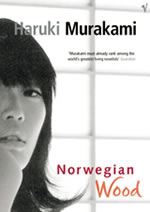
I am not sure how many of you have read the book “High Fidelity (1995)”. The timing could not have been more perfect. As the main character Rob Fleming recounts his top five most memorable split-ups, that inspired me to secretly write my own. I was nursing my not-so-whole-heart after a failed relationship back in 1995 and reading “High Fidelity” seemed like a comforting thing to do. “High Fidelity” is also about top five films, top five records, top five bands, and etc. I love music, I love films. That book was like my personal anthem. Since then, I have kept reading Nick Hornby’s publications but none of them gives me the same level of satisfaction.
Forward to year 2009. When I learned that “Juliet, Naked” is out and it is a book with the promise – on paper – that it is back to the music, I quickly reserved a copy from our national library. At the library counter, as I was collecting the book, I nearly fainted when the librarian spoke in her crisp clear voice reading the title from her computer, “So it is Juliet … that you want?”. I nearly lost my voice, secretly thanked her for skipping the word ‘naked’, and nodded instead. What a cheesy title Nick Hornby picks.
The story is relatively straightforward. Duncan is a big fan of the musician Tucker Crowe who has disappeared from the scene after his last album “Juliet”, inspired by his failed relationship with, of course, Juliet. Duncan has started a website called “Can Anybody Hear Me?” – a title of a track from Tucker’s EP – and together a few other like-minded fans (the ‘Crowologists’), they constantly examine Tucker’s work, visit the ‘historical sites’ that are of significant importance to Tucker’s music career. Annie works in a museum and has lately started to question why she is still in a relationship with Tucker. Out of the blue, Tucker has released an acoustic stripped down version of “Juliet” (and hence “Juliet, Naked” versus the original version “Juliet, Clothed”). Through the only music review Annie has written in the Internet, Tucker from US has made contact with Juliet, who lives in UK. And then the two worlds separated by an ocean overlap.
It is the same kind of Nick Hornby’s humor. Subtle and unexpected. Cynthia, on the other hands, does not seem to have the same level of enthusiasm as I do. It could be due to: (a) “Juliet, Naked” is a guy-lit, (b) Nick Hornby is a UK writer, or (c) a combination of (a) and (b).
To keep “Juliet, Naked” current, Nick Hornby has incorporated writings in email style, in forum style, and believe it or not, in Wikipedia style. While I can quite easy overlook the less than epic storyline as compares with “High Fidelity”, I think it would be a better idea for Nick Hornby to out-source Tucker’s emails and dialogs to an US writer because that would have made the book more convincing to read. As it stands, I cannot quite tell the difference between the tones and the writing styles of the characters of Annie (in UK) and Tucker (in US).
A light and entertaining read, not quite “High Fidelity”. But maybe, there is only one “High Fidelity”.








